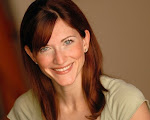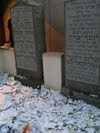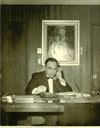I got this in an email from Parasha Partners today. It is a really helpful guide for the Saturday morning services.
CAN YOU STAND IT?
Dear Rabbi:
Dear Janet:
CAN YOU STAND IT?
by RABBI REUVEN DRUCKER
Dear Rabbi:
I occasionally go to synagogue on Shabbat, but feel very uncomfortable — I never know when to stand or sit. I expect that I will eventually figure it out, but it would be helpful if there were some general guidelines you can provide.
Thanks,
Janet N.
Janet N.
Dear Janet:
To stand or to sit - that is the question that has engaged the halachic authorities throughout the centuries. The underpinnings of the answer are fascinating, but before we explain them, let us first state the rule you are looking for.
There are only 6 places during the Shabbat morning service that, strictly speaking, one is required to stand. All other times that you find people standing, it is because they are following certain customs that are laudable, but not compulsory. The 6 places where one should stand are (the page numbers following refer to the ArtScroll Siddur - Heb./ Eng.):
- Baruch She’amar (the beginning of what’s called “Pesukei d’Zimra”), p. 370;
- V’yavareich David, p. 396;
- Amidah (silent prayer), p. 420, and the chazzan’s repetition of the Amidah (unless one is infirm), Kedushah (if one sits during the repetition), p. 422;
- the carrying of the Sefer Torah (Torah scroll), p. 436 & p.458;
- the Mussaf prayer and its repetition by the chazzan, p. 462, including Kedushah, p. 464 (if one sits during the repetition);
- Aleinu, p. 480.
It should be noted that standing is only a requirement for those who are capable of standing. If, however, one is unable to stand because of physical limitations, he or she should certainly recite the above passages and will be accredited with having said them properly.
The reason we stand for 1) and 2) is that they are recited in the section of Pesukei d’Zimra that are praises about G-d. These two passages express His primary praises, and therefore we stand to show our fullest reverence. We stand for 3), which is the silent prayer. It is called “Amidah” (lit. ‘stand’) because we find that our Patriarch, Abraham, stood when he established the morning prayer (see Genesis 19:27). Whenever the Sefer Torah is being carried (4), we have an obligation to display it the greatest honor. We stand during the Aleinu prayer because the first and last letter of the prayer expressed in the first passage spell eid, (‘witness’), and in Jewish law a witness is required to stand when giving testimony. The content of the Aleinu prayer is a declaration of our faith, essentially our testimony about the Creator’s existence.
The practice of standing during the performance of a mitzvah is traced to the mitzvah of Sefiras HaOmer, the counting of the 49 days between Passover and Shavuos. According to one tradition, the Torah requires this counting be done in a standing position. There is much discussion among the early authorities regarding the linkage of other mitzvos to Sefiras HaOmer. Those that are linked must also be performed in a standing position. All authorities agree that putting on a Tallis (a four-cornered fringed garment) and the blowing of the shofar on Rosh HaShanah are linked and require standing. Some add that Kiddush Levanah (the blessing on the new moon when it becomes visible), Lulav (the 4 species taken on Succos), and Bris Milah (circumcision) are also linked and require standing. Other authorities add even more mitzvos to this list, based on exegesis. It is interesting to note that all authorities agree that there is a class of mitzvos that one should sit for— blessings that are made on our enjoyment of the pleasures that G-d has given us, for example, the Grace after Meals following a bread meal. Included in this category are the blessings that are made before eating food or enjoying the aroma of different flowers or spices.
While some of the rules of standing may be complicated, one thing is simple. The effort we make to stand when performing a mitzvah is an expression of our respect and readiness to fulfill Hashem’s Will.
Regards,
Rabbi Reuven Drucker
Rabbi Drucker can be reached at rabbidrucker@partnersintorah.
Submit your questions for publication consideration to parsha@partnersintorah.org










Comments (0)
Post a Comment